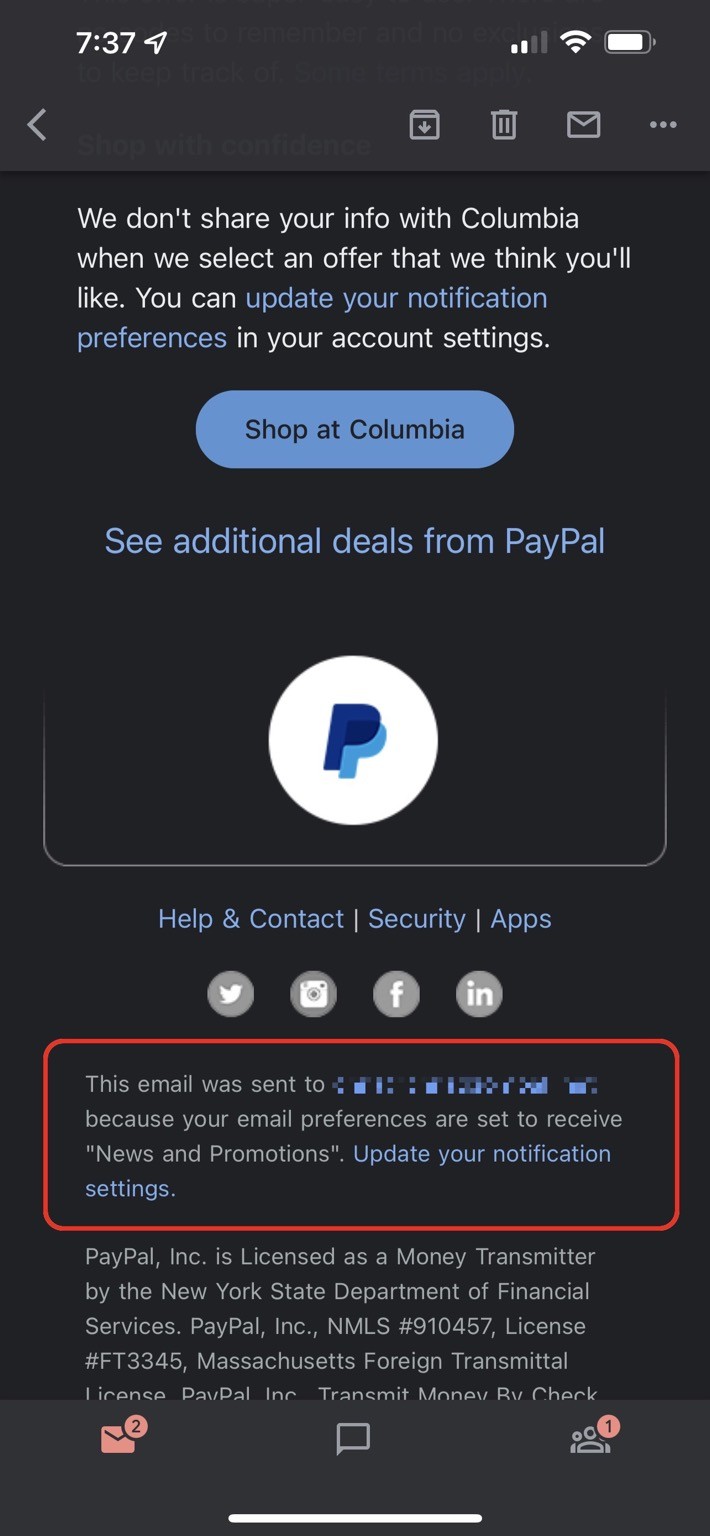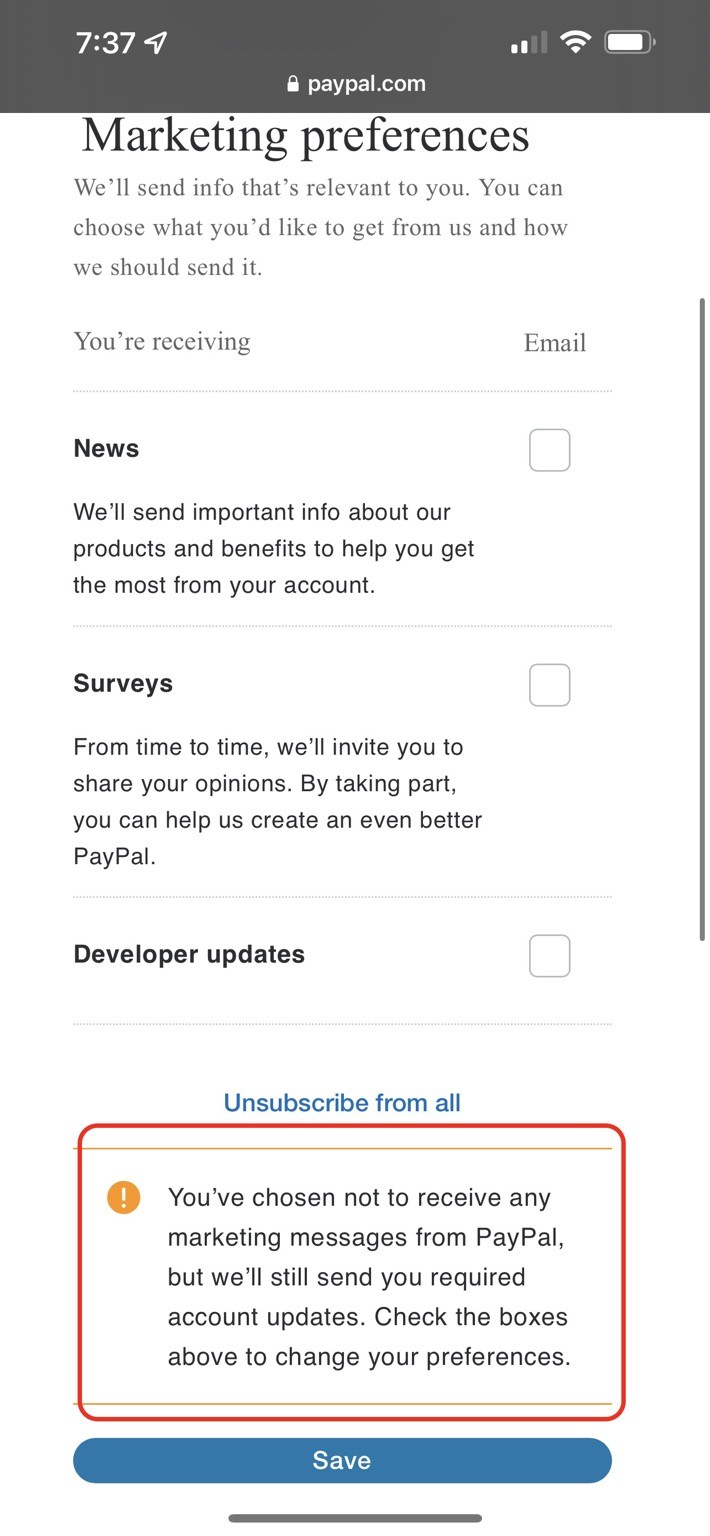Embracing a ruthless approach to email spam
For years, I've dutifully clicked "Unsubscribe" from the email lists of companies I'd done business with, organizations I'd donated to, and news roundups I'd once wanted to read.
Over the past two years, however, I have adopted a new strategy for dealing with unwanted email:
- If I recall trying to unsubscribe from this company/list/whatever before, it clearly didn't work, and the email goes right to spam.
- I mentally begin counting down from 5 seconds. If I get to zero before successfully unsubscribing, I just mark the email as spam and move on.
- I find and click the unsubscribe link. If I can't easily find it, I mark the email as spam and move on.
- If the link doesn't work, or it takes me to a page where I have to log in, type my email address, or deal with any other bullshit[1], I close the browser window and just mark the email as spam.
This is because unsubscribe links, even when they are present and easy to find, seem to have stopped working sometime in the past few years. Let's review two of my favorite patterns:
The mailing list that's derived from another, impossible-to-unsubscribe-from, list
Often, when I do manage to find an unsubscribe link in under 5 seconds, MailChimp or whatever cheerfully tells me, "OK, you've been successfully unsubscribed from the list: november 6 mail to all former customers Dave's copy 2 final!"[2]
Fast forward 2 days, and surprise: I get another email from the same company. Unsubscribe. MailChimp: "You've been successfully unsubscribed from the list: november 8 mail to everyone mailchimp test 3!"
I think these marketers create a new mailing list for every email, based on some internal list. You can unsubscribe from the list "november 6 mail to all former customers Dave's copy 2 final," sure, but you're never getting off that internal list.
So, once this happens, I don't even bother to unsubscribe; I just mark all their messages as spam.
This also happens with political emails. I regret ever donating to Hillary's campaign, because apparently there's some secret, impossible-to-unsubscribe-from list of emails and phone numbers that's shared to every single Democratic candidate for anything, anywhere. Even if I manage to remove myself from John Whatever's email list about his state house campaign in Iowa, two minutes later I'll get an email from Alice Whoever, who's running for who-knows-what-I-don't-care in Florida, and urgently needs my attention.
So, all political fundraising emails: straight to spam. (And I never pick up any phone calls from a 202 area code.)
Update, November 17, 2021: as if on cue, hours after posting this, I got an email from GitHub about "GitHub's The ReadME Project 11.21." This is odd, because I'm pretty sure I've unsubscribed from this mailing list at least once before. So, I clicked the unsubscribe link:

Ah. Last month — October 2021 — I must have unsubscribed from "GitHub's The ReadME Project v10.21," which of course is a completely different mailing list from "GitHub's The ReadME Project v11.21". I look forward to marking next month's email, which I'm sure will be from the completely new mailing list "GitHub's The ReadME Project v12.21," as spam.
No really, these are critical account emails, and you can't unsubscribe from those
Credit Karma does this. They'll send a weekly email with important news, like "here are thirty new credit cards you should get!" At the bottom, in 4-point type, there's a link like "Click here to manage your email subscription preferences."
When I do, that page cheerfully informs me that I'm only receiving critical emails about my account, and the only way to stop those is to delete my account.
PayPal does something similar, just flat-out lying to you. Here's a marketing email from them, which at the bottom claims I've chosen to receive "News and Promotions":

There's even a helpful link to "update your notification settings!"
Imagine my utter shock to learn that, according to PayPal, I'm only receiving "required account updates:"

Some closing thoughts
I no longer care that marking something as spam might eventually cause difficulty for these senders, because the spammers sending these emails clearly don't care. In fact, I truly hope these opaque email reputation systems work, and that marking this shit as spam does hurt them.
So, now, they get 5 seconds of my time, once, to avoid the spam folder.
Oh, and, to any email marketers who might read this: get, and I cannot emphasize this enough, fucked.